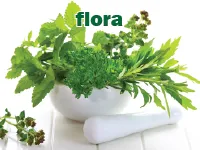
English vocabulary and phrases on Mid-Autumn Festival
flora means . Learn how to pronounce and use flora through vivid examples and easy-to-understand exercises.

Okay, let's break down how to pronounce "flora." Here's a breakdown and a few options:
Most Common & Recommended Pronunciation:
/ˈflɔːrə/ (This is the most common and generally accepted pronunciation in American English)
Alternative Pronunciation (Less Common, but still used):
/flɔːrə/ (This is more common in British English)
Tips for Pronunciation:
To help me give you even more targeted advice, could you tell me:
Let's break down how to use the word "flora" in English. It's a beautiful and specific word, but it's not used as casually as, say, "plant." Here's a breakdown of its meaning, usage, and some examples:
Describing a Landscape: This is the most common use.
In Scientific Texts: You'll frequently find it in botany, ecology, and related fields.
More Formal Writing: “Flora” sounds quite formal. It’s not typically used in everyday conversation.
As a Noun: It's always a noun – it refers to the plants themselves, not an action involving plants.
Resources for Further Learning:
Do you want me to:
Which of the following terms refers to the plant life found in a particular region or time period? a) fauna b) flora c) habitat d) climate
The botanist's report detailed the indigenous ______ of the national park, highlighting several rare species. a) vegetation b) animal life c) flora d) wildlife
Which of these words would you most likely use when describing the plant diversity of a geographical area? a) topography b) ecology c) flora d) biodiversity
When discussing the animals inhabiting a specific area, you would primarily refer to its: a) climate b) terrain c) fauna d) ecosystem
To describe the entire collection of living organisms (plants, animals, fungi, etc.) in an environment, the most comprehensive term is: a) species b) population c) ecosystem d) community

English vocabulary and phrases on Mid-Autumn Festival

Tips to improve vocabulary in communication

English vocabulary by topic: Clothes

The secret to remembering all 50 English vocabulary words every day easily

English vocabulary by topic: Human body

Vocabulary of the most popular subjects in English

Learn English about Covid: All about vocabulary and disease prevention

Vocabulary of Subjects in English

Set of 60 English vocabulary on educational topics

Vocabulary - just a small thing!
Comment ()